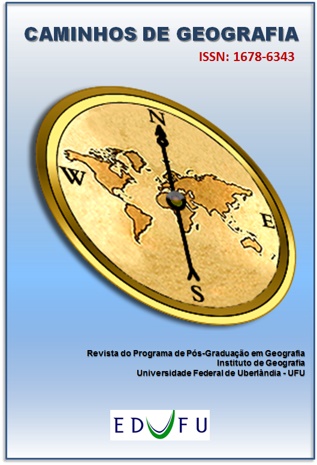PERFORMANCE OF A NEW LOW-COST METEOROLOGICAL SHELTER MODEL
DOI:
https://doi.org/10.14393/RCG238658167Keywords:
Efficiency, Calibration, Air Temperature, Relative Humidity, Automatic Weather Station, Low Cost Meteorological ShelterAbstract
This research concerns in to create and evaluate the performance of the low-cost meteorological shelter called AMP. For the construction of this, garden plastic plates were selected by this shelter, whose performance was compared with another low-cost meteorological shelter called ABC, in addition to the Automatic Weather Station (AWS) model Campbell CR 1000 and the INMET/UFSM Weather Station. In each low-cost meteorological shelter, a datalogger was installed, which was configured to collect air temperature and air relative humidity data every 10 minutes, between 11/14/2019 and 11/19/2019. To assess the performance of shelters in comparison to official data, statistical parameters were applied. The results for air temperature showed that AMP shelter had the best performance compared to the ABC shelter. The shelters tested showed that AMP has a better correlation with INMET/UFSM and an almost perfect correlation with AWS. For the air relative humidity records, it was observed that the highest values were recorded by official shelters, followed by ABC and the lowest maximum recorded in the period was by AMP. It was possible to conclude AMP shelter was more efficient than the ABC shelter for temperature and air relative humidity, and the values were similar with AWS and UFSM data.
Downloads
Downloads
Published
How to Cite
Issue
Section
License
Copyright (c) 2022 Ismael Luiz Hoppe, Cássio Arthur Wollmann, Jakeline Baratto

This work is licensed under a Creative Commons Attribution-NonCommercial-NoDerivatives 4.0 International License.
Autores que publicam nesta revista concordam com os seguintes termos: a) Autores mantém os direitos autorais e concedem à revista o direito de primeira publicação, com o trabalho licenciado sob a Creative Commons Atribuição-NãoComercial-SemDerivações 4.0 Internacional. b) Autores têm permissão e são estimulados a publicar e distribuir seu trabalho online (ex.: em repositórios institucionais ou na sua página pessoal), já que isso pode gerar alterações produtivas, bem como aumentar o impacto e a citação do trabalho publicado. c) Em virtude de aparecerem nesta revista de acesso público, os artigos são de uso gratuito, com atribuições próprias, em aplicações educacionais e não-comerciais.











